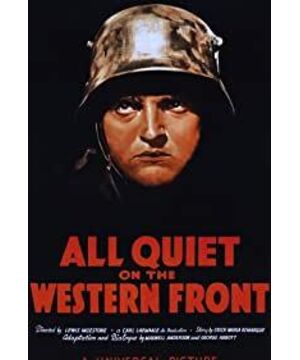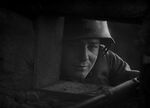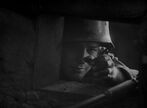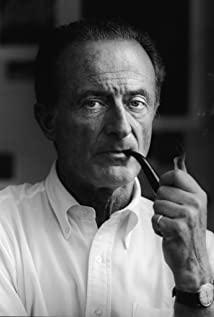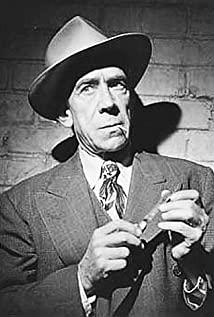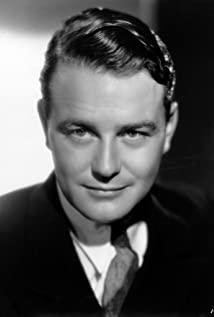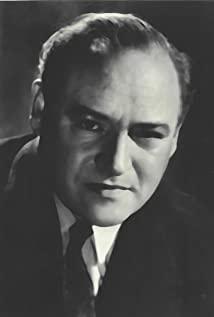http://qfmeng.blogbus.com/logs/157286947.html
All Quiet on the Western Front (1930)
Continue to read the IMDB250 series, follow It's time for the ranking to watch this one. Before I watched it, I thought it was a silent film, but the movie actually made a sound, I was surprised. When did sound movies become popular?
The movie tells the story of a group of German students on the battlefield. When the First World War broke out, the students in the school joined the army at the instigation of their teachers. After arduous training, came to the battlefield. The battlefield was completely different from what they had imagined. Under the leadership of the veterans, they left behind the idea of serving the motherland, and saving their lives became the top priority. As the war progressed, the classmates who joined the army either died, became disabled, or became mentally ill, and the leading actor had fewer and fewer comrades-in-arms. In a battle, he and the man he killed himself were trapped in a cannonball crater for several days, and they were about to collapse. During the rest period, the protagonist and the French girl were injured by a bomb when they left. After he recovered physically, he returned home, but couldn't stand the lies of the people in his hometown, so he had to return to the battlefield. On the battlefield, his comrades all died, and he was shot to death by the enemy for catching butterflies.
This is a typical anti-war movie, the film is full of anti-war atmosphere from beginning to end. The story of the film is fragmentary, through many short stories connected into a movie, through each of the short stories, we can see the cruelty of the war, the hard life of the soldiers, and the absurdity of the war. The soldiers who lacked supplies to find food on their own, their discussions on the causes of the war, the frequent flow of patients in the hospital, the pain after the hero’s murder, the replacement of good leather boots owners, etc., can all be seen in the first world war. The absurdity and cruelty. In addition, from the instigation of school teachers at the beginning of the movie and the talk of people in the hometown on paper, we can also see the absurd understanding of the war from all walks of life in the country. In short, the soldiers participating in this battle are as insignificant as dust. No one cares about their life or death, and no one cares about their thoughts. For the entire country and those who talk about war on paper, even if the soldiers on the battlefield are all dead, there will be young children to add them and continue to be cannon fodder on the battlefield.
The plot of the movie truly reflects reality, such as the teasing of the training officers, the indifference in the hospital, and the soldiers' reaction to the war-escape, homesickness, fear, etc., these aspects will appear in any war. In particular, the dewy marriage between the soldiers and the women of the occupied territories is a must-have romantic story in every war. Women need food and defenders. They can only use their bodies in exchange for these, so that every time a war is over, there will be a large number of mixed-race children, or children without fathers. What the soldiers experienced in this film is part of this process, and it is very likely that the male protagonist has already planted his own seeds. Who knows?
The most true reflection of the cruelty of the First World War in this film is the tens of minutes in the middle of the film. After the shelling was over, the soldiers rushed to the front line like ants, drowning the enemy's fire with their bodies, and when the first line of defense was breached, they came to the second line of defense to counterattack. After the counterattack is successful, return to the first line of defense. Although both the enemy and the enemy were killed and injured, there was no actual progress in the battle! This was the case for the entire First World War, consuming lives in the daily tug-of-war. Seeing this scene in the movie completely shocked me. What kind of battle is such a battle? It is obviously suicide! And it's group suicide! The "Verdun Meat Grinder" on the Western Front of the First World War really deserves its reputation. Soldiers were all "hanged" in this way.
When I first watched this film, I thought it was a small production, and most of them would use indoor scenes. After all, the age was too early and the technology was limited. After watching the movie, I knew that I was wrong. The film is a luxurious masterpiece. The war scenes in the movie are large in scale and real. It is a luxury war blockbuster with huge investment. Take the scene I just mentioned as an example. There can be thousands of soldiers on the field. The shelling scene is very realistic, and the explosion images that advance from far to near, layer by layer, are very shocking. Soldiers shooting, fighting, fighting, these scenes are also large-scale panoramic views, giving people a cruel reality. In addition to this battle, there are other scenes with a large number of people in the movie, during the march, in the hospital, during the training camp, etc. At the end of the film, there are scenes of airplanes and air raids. Watching the entire movie in this era still feels shocking, let alone in the 1930s? It is hard to imagine how in 1930, when airplanes were not popular, and there was no computer special effects, how did the producers shoot these breathtaking pictures? In short, the film surprises me everywhere and makes me sigh at the amazing ability of the filmmakers.
The film directors’ way of expressing the war scenes is also commendable. The pictures of fast-moving trenches, close-ups of soldiers’ legs, blurred faces of soldiers, cut-out contrasts of the enemy and us when the whole charge, and the look back of each young man at the end of the film, etc. These impressive scenes and performances The methods are deeply imprinted in my mind. I have watched a lot of war films, but this film is the earliest one I have ever watched. The expression methods used in this film are not unusual for modern movies, but in 1930, the directors were able to use these methods to shoot war movies, which was indeed avant-garde. This film must be a teaching material for many directors of shooting war films, and later directors must also learn from many filming methods of this film. In a word, this film is probably the originator of war films.
There are always a lot of actors in war films, and only two of them left a deep impression on me. One is the male protagonist Lew Ayres, handsome and handsome, who interprets the psychological changes of the character well. There is too little information about him, I only know that he has become famous by relying on this film. The second is Louis Wolheim, the veteran actor, whose role gives people an optimistic personality. He has no Chinese materials at all, and he died too early, in 1931.
In general, this film is a good movie and a good war movie. But because of the heavy theme, the process is not pleasant to watch.
Sequence: 0514
TLF.IMDB.Top231. No War on the Western Front. All.Quiet.On.The.Western.Front.1930.D9.MiniSD-TLF
2011-08-22
View more about All Quiet on the Western Front reviews


